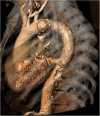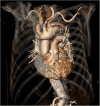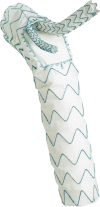Endovascular aortic arch repair using a double-branched approach
- PMID: 33061081
- PMCID: PMC7525893
- DOI: 10.1007/s12055-019-00788-0
Endovascular aortic arch repair using a double-branched approach
Abstract
The last 15 years have overwhelmed the surgical community with a range of approaches in treating pathologies involving the aortic arch of which some are here to stay. The ones to stay are-in the authors' opinion-refined classical surgical approaches such as the frozen elephant trunk technique, near-orthotopic combined vascular and endovascular approaches such as subclavian to carotid transposition/bypass and double transposition, and finally, near-orthotopic advanced endovascular solutions such as the double-endovascular repair using fenestrated and/or branched solutions which will be the main focus of this article.
Keywords: Double-branched approach; Endovascular aortic arch repair; Frozen elephant trunk.
© Indian Association of Cardiovascular-Thoracic Surgeons 2019.
Conflict of interest statement
Conflict of interestMartin Czerny and Bartosz Rylski are consultants to Terumo Aortic.No need for ethics or consent as this is a review article.
Figures






References
LinkOut - more resources
Full Text Sources
